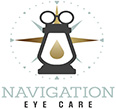Eye-Catching Art: Exploring the Role of Vision in Creativity and Expression
Artistry and creativity have always captivated human imagination, allowing us to translate thoughts and emotions into beautiful expressions. But have you ever wondered about the connection between vision and creativity? Optometrist Chesapeake VA invites you to delve into the fascinating relationship between our eyes and the art we create.
The Canvas of Vision: Seeing Beyond the Ordinary
Vision is the portal through which we perceive the world, and for artists, it’s the foundation of their creative process. When you look at a breathtaking landscape or a vibrant cityscape, your eyes capture every detail – the interplay of light and shadow, the array of colors, and the intricate textures. Optometrist Chesapeake VA underscores the importance of visual acuity in capturing these nuances that inspire art.
Seeing the Unseen: A World of Possibilities
Artists often have the remarkable ability to see beyond the surface, to envision worlds that exist in their mind’s eye. Their unique perspective is influenced by how they perceive the world through their eyes. This vision goes beyond mere observation; it’s about interpreting, reimagining, and transforming what they see into something entirely new.
Navigation Eye Care emphasizes that the clarity and accuracy of one’s vision play a significant role in this process. Clear vision enables artists to translate their ideas onto the canvas with precision, ensuring that their creations mirror their creative intentions.
Color Me Creativity: The Vibrant Role of Color Perception
Color is a cornerstone of visual artistry, and the way we perceive color is an intricate dance between our eyes and our brain. Optometrist Chesapeake VA explains that artists rely on their color perception to choose palettes that evoke specific emotions and create visual harmony. The subtle variations in shades and hues that might go unnoticed by others can deeply influence an artist’s work.
From painting to photography to graphic design, color perception shapes the narrative of art, making it a pivotal aspect of the creative process. Accurate color vision allows artists to convey their messages with authenticity and impact.
The Intersection of Art and Optometry
As we celebrate the intertwining of art and vision, it’s crucial to recognize the role of optometry in nurturing both. Navigation Eye Care’s eye doctor acknowledges that artists, like everyone else, benefit from regular eye exams to ensure their vision is at its best. Whether it’s prescribing corrective lenses for clear sight or addressing specific visual challenges, optometrists play a crucial role in supporting an artist’s vision – both artistically and literally.
Artistry knows no bounds, and neither does the potential of our eyes. Navigation Eye Care’s eye doctor encourages artists and creators to prioritize their eye health and vision clarity, ensuring that their creative journey remains as vibrant and boundless as their imagination.
The Masterpiece of Vision
Every brushstroke, every photograph, every stroke of a pen – they all originate from the vision that our eyes provide. Through the lens of our eyes, we interpret the world, create art, and connect with the emotions that fuel our creativity. As you embark on your artistic endeavors, remember that your eyes are not only the windows to the world but also the portals through which your artistic soul finds its expression.
Through the Lens: The Fascinating Science Behind How We See Color
Colors weave a tapestry of beauty and emotion around us, influencing our perceptions and evoking feelings we often can’t put into words. But have you ever wondered about the science behind our ability to see and interpret colors? Optometrist Chesapeake VA invites you to dive into the captivating world of color vision and how our eyes decode the spectrum.
The Color of Light: A Prism of Possibilities
Color is not inherent in objects themselves; it’s a product of the interaction between light and our eyes. Natural light contains a spectrum of colors, each with a unique wavelength. Navigation Eye Care’s eye doctor explains that when light strikes an object, some wavelengths are absorbed, and others are reflected. It’s the reflected wavelengths that our eyes perceive as color.
Our eyes consist of specialized cells called cones, which are responsible for color vision. These cones are sensitive to different wavelengths of light, allowing us to see the rainbow of colors that make up our world.
Primary Colors and Beyond: RGB and CMY
The science of color vision delves into the concept of primary colors – the foundational hues from which all other colors can be created. In the world of digital displays, we encounter the RGB model, where red, green, and blue light combine to form a full spectrum of colors. This model is the basis for the screens we interact with daily.
On the other hand, in the world of printing and mixing pigments, the CMY model comes into play – cyan, magenta, and yellow are combined to create a wide array of colors. This model is utilized in processes like color printing.
Color Blindness: The Puzzle of Perception
While our eyes are remarkable in their ability to perceive color, not everyone experiences the same spectrum. Color blindness, or color vision deficiency, affects a significant portion of the population. Optometrist Chesapeake VA explains that it’s often caused by an absence or malfunction of certain cones responsible for specific wavelengths of light.
The most common form of color blindness is red-green color blindness, which can make it challenging to differentiate between these hues. While color blindness doesn’t usually affect daily life significantly, it can impact tasks that rely heavily on color identification, such as reading color-coded information or certain occupations that require precise color perception.
A Kaleidoscope of Vision
The science of color vision is a testament to the intricate workings of our eyes and brain. Optometrist Chesapeake VA emphasizes that while understanding the science behind color vision is fascinating, it’s equally important to value the beauty and depth that colors bring to our lives.
As you admire a sunset’s warm hues, appreciate a vivid painting, or marvel at the play of colors in nature, remember that your eyes are the portals through which you experience this rich symphony of colors. Whether you see the world in its full spectrum or navigate it with color vision challenges, your eyes are a unique lens through which you perceive the world’s vibrant palette.

